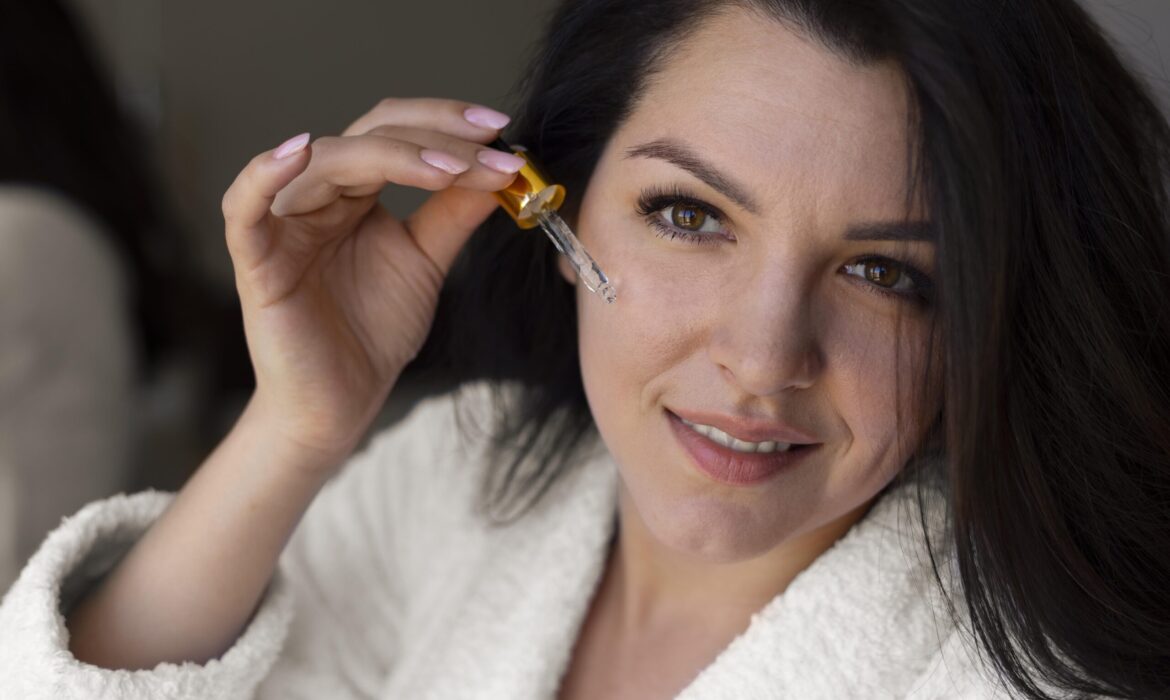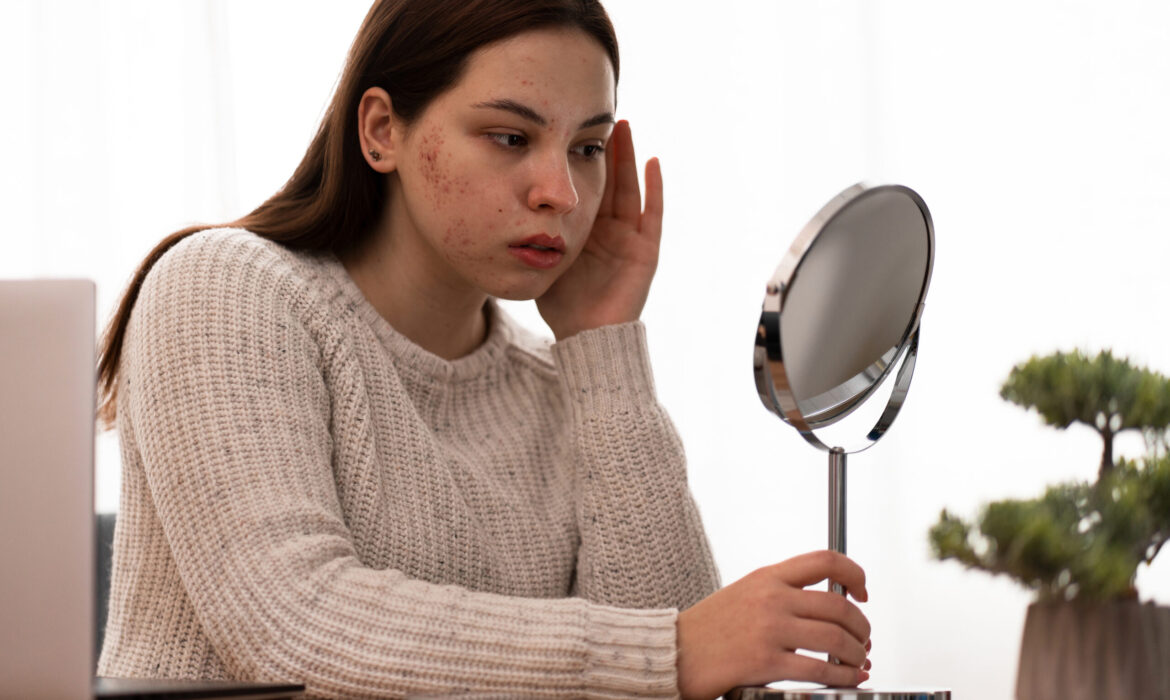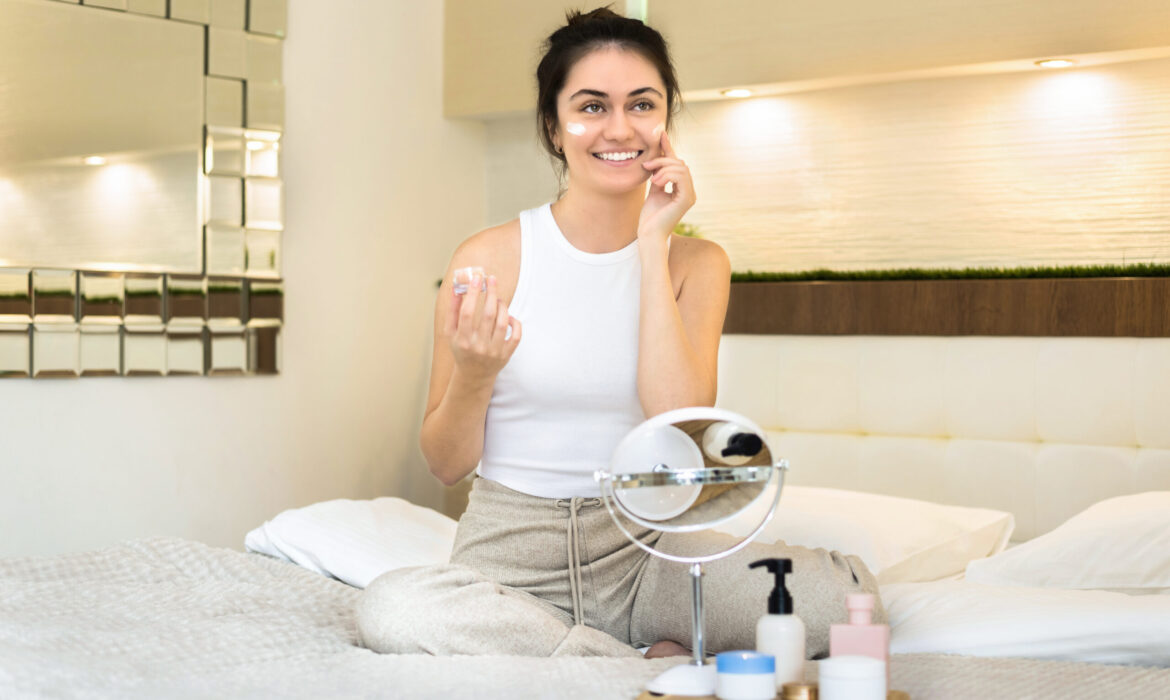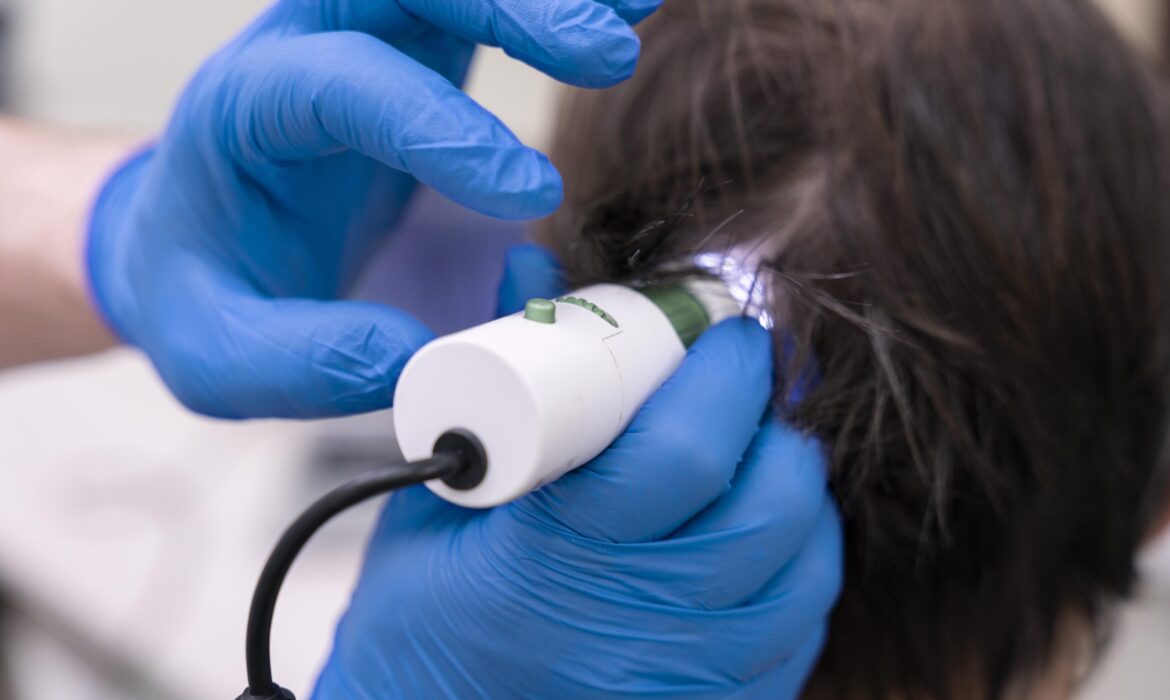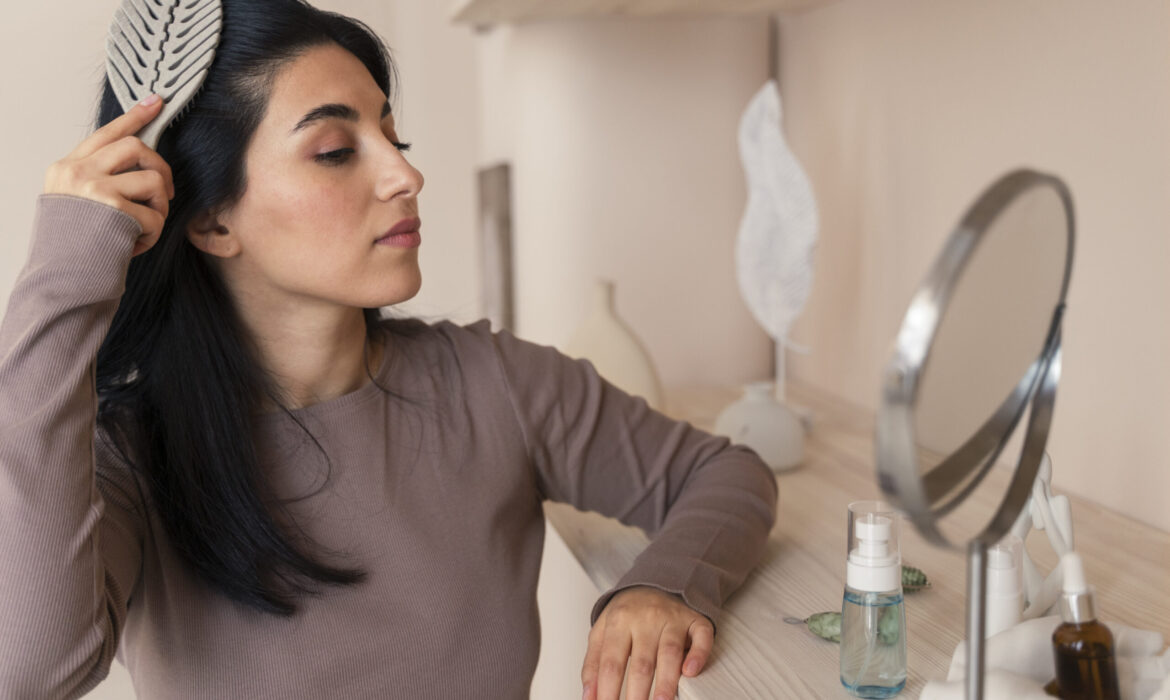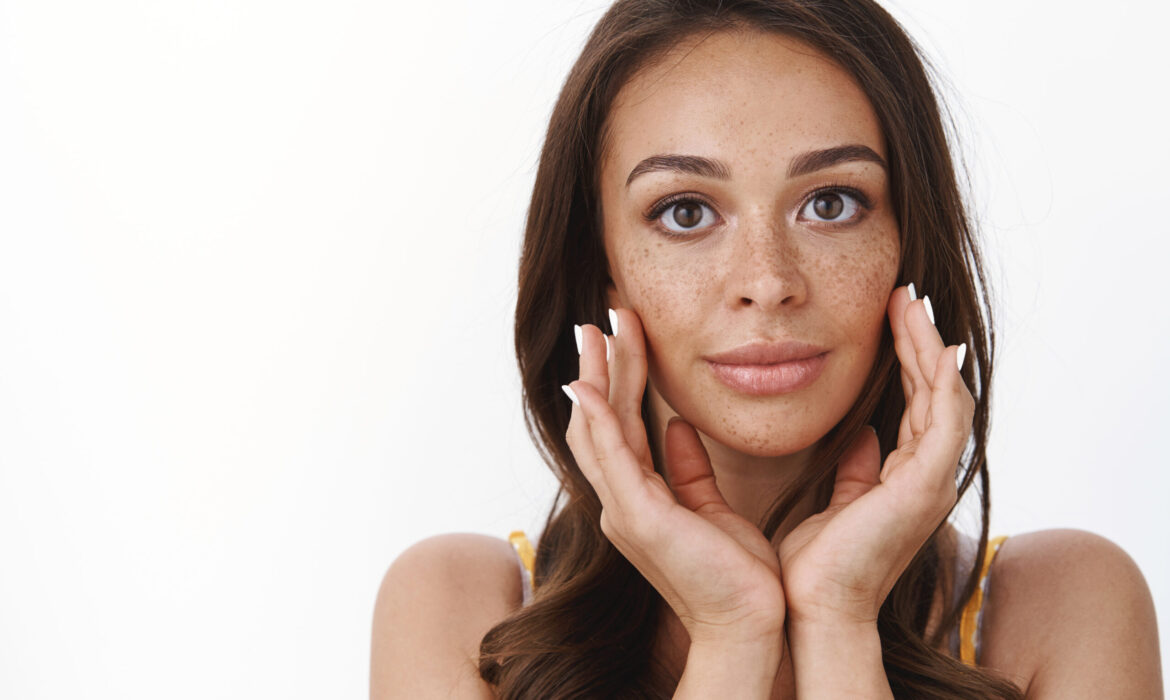How to Find the Best Face Wash for Glowing Skin
How to Find the Best Face Wash for Glowing Skin
Find the best face wash for glowing skin based on your type. Chennai dermatologists at Dr. Hanan Clinic share expert tips and ingredients for radiant, healthy skin.

Table of Contents
Finding the best face wash for glowing skin isn’t just about picking the most popular product on the shelf. With so many cleansers – foaming, gel, cream, and exfoliating – it’s easy to get lost in the marketing. But your skin’s glow depends not on trends, but on science and skin type.
At Dr. Hanan Dermatology Speciality and Trichology Clinic, Chennai, our dermatologists guide patients daily on how to build an effective cleansing routine for radiant, healthy skin. Whether you have oily, dry, or sensitive skin, using the right dermatologist-recommended face wash can make a remarkable difference.
Why Choosing the Right Face Wash Matters
A face wash is more than a cleansing step — it’s the foundation of your glowing skin routine. Using the wrong type can strip your skin of its natural oils, trigger breakouts, or dull your complexion.
Your skin’s pH balance, hydration, and barrier integrity all depend on how you cleanse it. That’s why dermatologists at Dr. Hanan Clinic Chennai recommend using cleansers with gentle surfactants, hydrating ingredients, and antioxidants suited for your skin type.
A dermatologist-recommended face wash doesn’t just remove dirt and makeup — it supports your skin’s microbiome, regulates oil, and prepares your skin to absorb nutrients from serums and moisturizers.
1. Identify Your Skin Type Before Choosing a Face Wash
The first step in finding the best face wash for glowing skin is identifying your skin type. Here’s what dermatologists recommend:
Oily or Acne-Prone Skin
If you have oily skin, your face tends to feel greasy and shiny within hours of cleansing. The key is to balance oil production without over-drying. Choose a gel-based face wash for oily skin with:
- Salicylic Acid – unclogs pores and reduces acne.
- Niacinamide – regulates oil and brightens dull skin.
- Tea Tree Extract – antibacterial and calming.
These cleansers are lightweight, refreshing, and keep your pores clear in Chennai’s humid weather.
Dry Skin
For dry, flaky skin, avoid harsh foaming cleansers. Instead, go for cream-based or hydrating face washes enriched with:
- Hyaluronic Acid – locks in moisture.
- Ceramides – repair the skin barrier.
- Aloe Vera or Vitamin E – soothe and nourish.
A gentle cleanser ensures your skin feels supple and smooth instead of tight after washing.
Combination Skin
If your T-zone is oily and cheeks are dry, you have combination skin. The best option is a pH-balanced, non-stripping face wash with mild surfactants and hydrating ingredients.
Sensitive Skin
Choose a fragrance-free, sulfate-free cleanser with ingredients like Centella Asiatica or Panthenol. Avoid scrubbing or exfoliating cleansers that can irritate your skin barrier.
Dermatologist Tip: Avoid using bar soaps or alcohol-based cleansers — they can disrupt your skin’s microbiome and lead to dryness or breakouts.
Ingredients That Help You Achieve Glowing Skin
To achieve luminous, healthy skin, focus on face washes that brighten and hydrate, rather than those that promise “instant glow” with harsh chemicals.
Here are dermatologist-approved ingredients that actually work:
- Vitamin C – Brightens skin tone and reduces dullness.
- Lactic Acid & Glycolic Acid – Gently exfoliate dead skin cells for renewed glow.
- Niacinamide – Balances oil and improves texture.
- Green Tea Extract – Protects against pollution and inflammation.
- Licorice Root Extract – Reduces pigmentation and evens tone.
Pro Tip from Dr. Hanan Clinic: Avoid alcohol, parabens, and artificial fragrances that can cause irritation – especially in Chennai’s hot and humid weather.
Morning vs. Night Cleansing Routine
A proper cleansing routine plays a vital role in achieving glowing skin.
Morning Routine:
Start your day with a mild brightening cleanser to remove overnight oil and prepare your skin for sunscreen and makeup. If your skin is oily, use a gel-based cleanser with niacinamide or tea tree extract.
Night Routine:
Cleansing at night is non-negotiable — it removes dirt, oil, sweat, and pollutants accumulated throughout the day. Dermatologists recommend double cleansing:
- Use an oil-based cleanser to dissolve makeup or sunscreen.
- Follow up with a gentle foaming cleanser to deep clean pores.
- Check our detailed guide on Oily Skincare in Chennai to understand night care better.
Common Face Wash Mistakes to Avoid
Even the best cleanser can fail if used incorrectly. Here are red flags our dermatologists often see:
- Over-cleansing: Washing more than twice a day strips natural oils.
- Using hot water: It damages the skin barrier and causes redness.
- Skipping moisturizer: Cleansing without rehydrating can make skin feel tight.
- Using facial scrubs daily: Over-exfoliation leads to irritation and breakouts.
Green Flag: Use lukewarm water and follow every cleanse with a hydrating serum or moisturizer to lock in moisture.
Read our full post on 10 Skincare Mistakes You Don’t Know You’re Making.
Dermatologist-Approved Face Wash Routine for Glowing Skin
- Wet your face with lukewarm water.
- Massage the cleanser gently in circular motions for 30–40 seconds.
- Rinse thoroughly and pat dry with a soft towel — never rub harshly.
- Follow with a toner, Vitamin C serum, and a moisturizer.
- Finish with sunscreen in the morning or hydrating cream at night.
At Dr. Hanan Clinic, we often combine at-home skincare with advanced Hydrafacial or Medi-Fusion Glow Therapy treatments for long-lasting glow and hydration.
Face Wash Recommendations by Skin Type (From Chennai Dermatologists)
Skin Type | Recommended Type | Key Ingredients |
Oily / Acne-Prone | Gel-based foaming cleanser | Salicylic acid, tea tree, niacinamide |
Dry | Cream-based or hydrating | Hyaluronic acid, ceramides, aloe vera |
Combination | Gentle pH-balanced | Green tea, Vitamin E |
Sensitive | Fragrance-free & mild | Centella Asiatica, panthenol |
Dermatologist Note: At Dr. Hanan Dermatology Clinic, we perform a detailed skin analysis before suggesting any cleanser — because what works for one person may not work for another.
Expert Advice from Dr. Hanan Clinic, Chennai
At Dr. Hanan Dermatology Speciality and Trichology Clinic, we go beyond over-the-counter recommendations. Our dermatologists customize skincare plans for:
- Acne-prone and sensitive skin
- Dullness and pigmentation
- Post-treatment skin recovery
We offer medical-grade facial cleansers and in-clinic skin rejuvenation therapies like:
- Hydrafacial for instant glow
- Chemical peels for exfoliation
- Laser skin rejuvenation for deeper brightness
Each plan is designed based on your skin condition, weather, and daily exposure in Chennai.
Final Thoughts
The best face wash for glowing skin isn’t about expensive products — it’s about balance, consistency, and professional advice. A dermatologist-approved face wash gently removes impurities while maintaining hydration and radiance.
If you’re unsure which cleanser suits your skin, consult our dermatologists at Dr. Hanan Clinic Chennai for a personalized skincare plan that ensures your glow is here to stay.
Book Your Consultation Today!
Benefits of Vitamin C: How to Use, When to Use, Pros and Cons
Benefits of Vitamin C: How to Use, When to Use, Pros and Cons
Learn dermatologist-approved benefits of Vitamin C for glowing, even-toned skin. Discover how to use it safely, when to apply, and what to avoid.
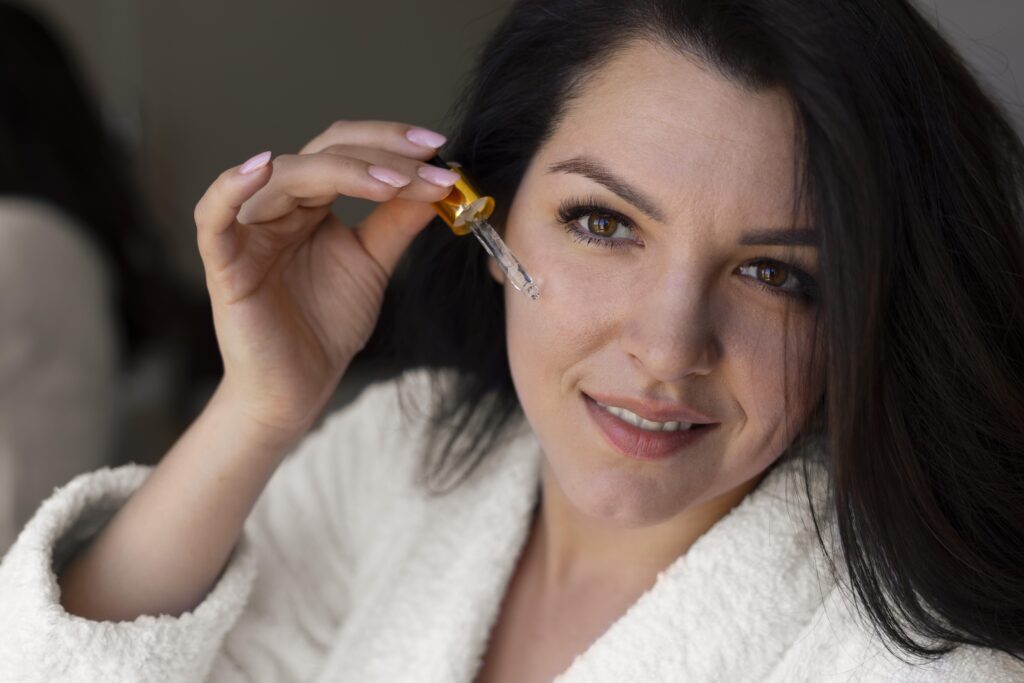
Table of Contents
Vitamin C is one of the most talked-about skincare ingredients — and for good reason. From brightening dull skin to fading pigmentation, the benefits of Vitamin C extend far beyond basic skincare. Dermatologists at Dr. Hanan Clinic, Chennai often recommend Vitamin C as a daily essential for those seeking radiant, youthful skin.
In this guide, you’ll learn how Vitamin C works, how to use it safely, and when it’s most effective — along with its pros and cons from a dermatologist’s perspective.
What Is Vitamin C and Why It Matters for Skin
Vitamin C (ascorbic acid) is a powerful antioxidant that helps protect the skin from free radicals caused by sun exposure, pollution, and stress. It supports collagen production, reduces pigmentation, and helps your skin maintain a healthy glow.
At Dr. Hanan Dermatology Speciality Clinic, we emphasize that using Vitamin C topically provides faster and more targeted results than oral supplements for most skin concerns.
Semantic Keywords: Vitamin C serum for skin, antioxidant skincare, collagen-boosting vitamin, dermatologists in Chennai, best Vitamin C treatments
Benefits of Vitamin C for Skin
Brightens Dull Complexion
Vitamin C inhibits melanin production, reducing dark spots and evening out skin tone. Regular use gives the skin a visible radiance within weeks.
Boosts Collagen and Elasticity
Collagen keeps your skin firm and youthful. Vitamin C helps stimulate collagen synthesis, reducing fine lines and sagging.
Reduces Hyperpigmentation and Melasma
For patients struggling with melasma or post-inflammatory pigmentation, Vitamin C is a dermatologist-approved brightening ingredient.
Learn more about pigmentation management in our blog Top Skin Brightening Treatments in Chennai.
Protects Against Sun and Pollution Damage
Vitamin C neutralizes free radicals generated by UV rays and pollution, preventing premature aging and oxidative stress.
Speeds Up Healing
It assists in repairing damaged skin and reducing redness or irritation after dermatological procedures such as chemical peels or laser therapy.
How to Use Vitamin C in Your Skincare Routine
Cleanse First
Start with a gentle cleanser suitable for your skin type to remove oil, makeup, and impurities.
If you have oily or acne-prone skin, check our guide on Oily Skincare in Chennai.
Apply Vitamin C Serum at Night
Nighttime is the ideal period for Vitamin C application because your skin naturally repairs and regenerates while you sleep. Applying Vitamin C before bed enhances collagen production and brightens dull skin overnight. Use 2–3 drops on clean, dry skin before moisturizer.
Lock in Moisture
Follow with a hydrating, non-comedogenic moisturizer to seal in the serum and prevent transepidermal water loss during the night.
Morning Routine Tip
The next morning, always apply sunscreen (SPF 30 or higher) to protect your skin from UV rays and maintain the brightening benefits achieved overnight.
Dermatologist Insight from Dr. Hanan Clinic:
Using Vitamin C at night reduces oxidation from sunlight and pollution, giving more consistent results for dullness, pigmentation, and fine lines.
When to Use Vitamin C
- Morning: Best for daily antioxidant protection.
- Evening: Helps recovery after exfoliation or dermatological treatments.
- Post-Treatment: Vitamin C can be added after procedures like microneedling or laser resurfacing (once approved by your dermatologist).
Remember: Over-layering Vitamin C with acids or retinol can cause irritation. Space them out between morning and night routines.
Pros and Cons of Vitamin C
Pros | Cons |
Brightens skin tone and fades pigmentation | Can irritate sensitive skin if overused |
Boosts collagen production | Oxidizes quickly if exposed to air or light |
Reduces sun and pollution damage | May cause stinging when combined with exfoliants |
Enhances sun protection when used with SPF | Requires consistent use for visible results |
At Dr. Hanan Clinic, our dermatologists balance Vitamin C usage with your specific skin type — ensuring the benefits outweigh any potential side effects.
Expert Dermatologist Insight from Dr. Hanan Clinic, Chennai
Our dermatologists combine Vitamin C-based skincare with in-clinic treatments like:
- Medi-Fusion Glow Therapy – for instant brightness and hydration.
- Hydrafacial with Antioxidant Serum – boosts Vitamin C absorption.
- Microneedling with Exosomes – enhances collagen formation and glow.
Each plan is customized after a detailed skin analysis to ensure visible, lasting results.
Visit Dr. Hanan Dermatology Speciality and Trichology Clinic in Padur, OMR, Chennai for personalized Vitamin C treatments and dermatologist-guided skincare plans.
Final Thoughts
The benefits of Vitamin C go far beyond glow — it’s one of the few clinically proven ingredients that fights aging, pigmentation, and dullness simultaneously. However, knowing how and when to use it is key.
Book Your Consultation Today!
How Stress Affects Your Skin
How Stress Affects Your Skin
Learn how stress affects your skin, causing acne, dullness, and aging. Get dermatologist-approved solutions
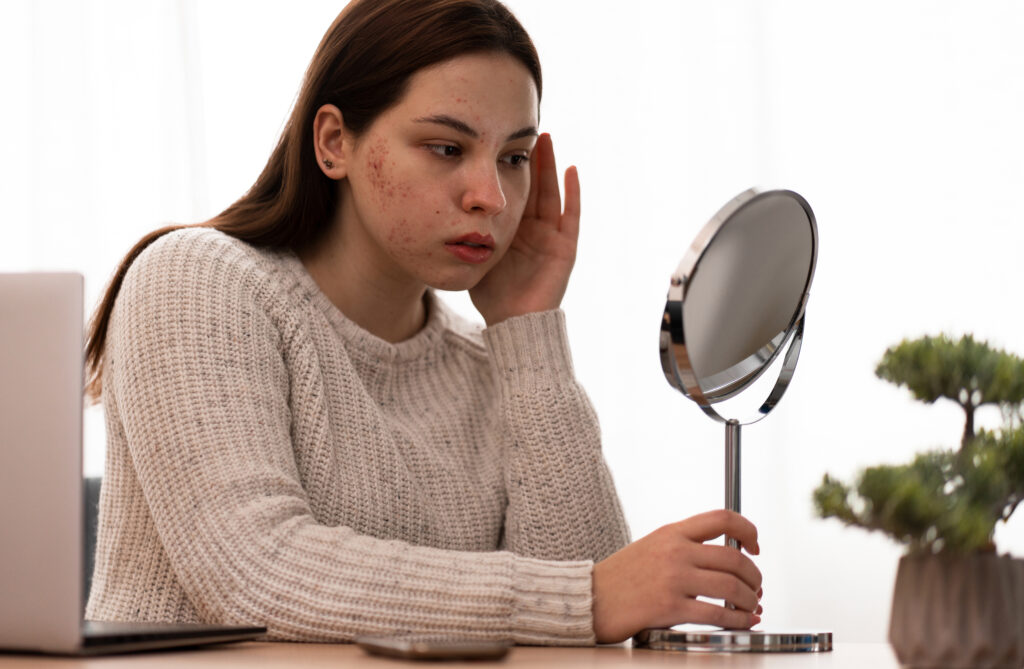
Table of Contents
Have you ever noticed that your skin breaks out or looks dull right when life feels most chaotic? You’re not imagining it. Stress doesn’t just live in your mind — it shows up on your skin too.
At Dr. Hanan Dermatology Speciality and Trichology Clinic in Chennai, our dermatologists often meet patients who are worried about acne, hair fall, or dull skin — and when we dig deeper, stress is usually part of the story. Understanding how stress affects your skin is the first step toward healing it from the inside out.
What Happens to Your Skin When You’re Stressed?
When you feel stressed, your body releases a hormone called cortisol — often called the “stress hormone.” Cortisol helps you deal with short-term pressure, but when it stays high for too long, it affects your skin’s natural balance.
Here’s what happens:
- Your oil glands go into overdrive, producing more sebum (oil).
- The skin barrier weakens, losing moisture and protection.
- Inflammation increases, leading to breakouts, sensitivity, or redness.
“Many people assume their skin suddenly changed, but it’s actually their stress levels disrupting the normal rhythm of their skin,” says Dr. Hanan, leading dermatologist at Dr. Hanan Clinic.
Common Skin Problems Triggered by Stress
1. Acne and Breakouts
Cortisol fuels oil production, which clogs pores and causes inflammation — a perfect recipe for acne. Stress acne usually appears around the forehead, jawline, and cheeks.
💡 Expert tip: Use gentle cleansers with salicylic acid and non-comedogenic moisturizers. Avoid over-washing — it worsens oil imbalance.
2. Dull and Dehydrated Skin
When stressed, blood flow shifts away from the skin to vital organs. Your skin ends up looking pale, dry, or lifeless.
💡 Dermatologist tip: Add Hydrafacial or Medi-Fusion Glow Therapy to your routine. They boost hydration and instantly revive tired skin.
👉 Learn more about Hydrafacial Treatment in Chennai.
3. Premature Aging
Chronic stress accelerates collagen breakdown, leading to wrinkles, sagging, and fine lines earlier than expected.
💡 Treatment option: Rejuvenation therapies like Laser Skin Resurfacing and Chemical Peels at our clinic help renew and tighten skin for a youthful glow.
4. Flare-Ups of Skin Conditions
Stress can trigger or worsen conditions such as:
- Eczema – causes dryness, redness, and itching.
- Psoriasis – leads to thick, scaly patches.
- Rosacea – increases redness and sensitivity.
💡 Dr. Hanan’s advice: “Managing stress is just as important as treating the skin itself. We often combine medical treatment with relaxation practices for lasting relief.”
5. Hair and Scalp Concerns
Stress can also affect your scalp health, leading to hair thinning, excessive shedding, or slow growth.
Our clinic offers proven treatments such as:
These therapies restore scalp circulation and stimulate natural hair growth.
How to Protect Your Skin During Stress
1. Build a Calm Skincare Routine
Stick to simple, dermatologist-approved skincare: a gentle cleanser, a hydrating serum, and sunscreen. Avoid experimenting with too many new products during stressful times.
2. Sleep Your Way to Better Skin
When you don’t get enough rest, your skin doesn’t have time to repair. Aim for 7–8 hours of sleep to allow your skin to rejuvenate overnight.
3. Eat Skin-Friendly Foods
Stress eating often leads to inflammation. Choose foods rich in omega-3s, antioxidants, and vitamin C — these protect your skin barrier and reduce breakouts.
4. Move and Meditate
Exercise and yoga release endorphins that lower cortisol and improve blood flow to your skin. Even 20 minutes a day can make a visible difference.
5. Seek Expert Help
If stress is causing persistent skin or scalp problems, it’s time to consult a dermatologist. At Dr. Hanan Clinic, we treat the root cause — not just the surface symptoms.
Expert-Recommended Treatments at Dr. Hanan Clinic
Our team combines dermatology expertise with the latest technology to repair stress-damaged skin and hair:
- Hydrafacial / Medi-Fusion Therapy – Deep hydration and detox for dull skin.
- PRP Therapy – Promotes collagen and hair follicle regeneration.
- Chemical Peels – Removes dead cells and reduces stress-induced pigmentation.
- LED Light Therapy – Calms inflammation and revives tired skin.
- Laser Treatments – Smoothens wrinkles and restores youthful radiance.
Each treatment plan is personalized after a detailed skin and scalp analysis.
When to Visit a Dermatologist
You should consult a skin specialist if you experience:
- Sudden acne breakouts after stress or lack of sleep
- Skin irritation or eczema flare-ups
- Excessive hair shedding or thinning
- Dull, dehydrated skin despite skincare
Our dermatologists at Dr. Hanan Dermatology Speciality and Trichology Clinic, Chennai use diagnostic tools like dermoscopy and trichoscopy to identify early signs of stress-related damage and recommend the most effective treatments.
Final Thoughts
Stress is an invisible enemy for your skin. It silently weakens your barrier, slows cell renewal, and triggers breakouts. But the good news? With the right care and expert guidance, your skin can bounce back stronger than ever.
At Dr. Hanan Clinic, Chennai, our approach combines science, technology, and care — helping your skin heal both inside and out. Whether you’re dealing with acne, pigmentation, or dullness, we’ll create a plan tailored to your needs.
Book Your Consultation Today!
Celebrities Skin Care Routine For Glowing Skin
Celebrities Skin Care Routine For Glowing Skin
Get glowing skin with dermatologist-approved celebrities skin care routine and treatments at Dr. Hanan Clinic, Chennai.
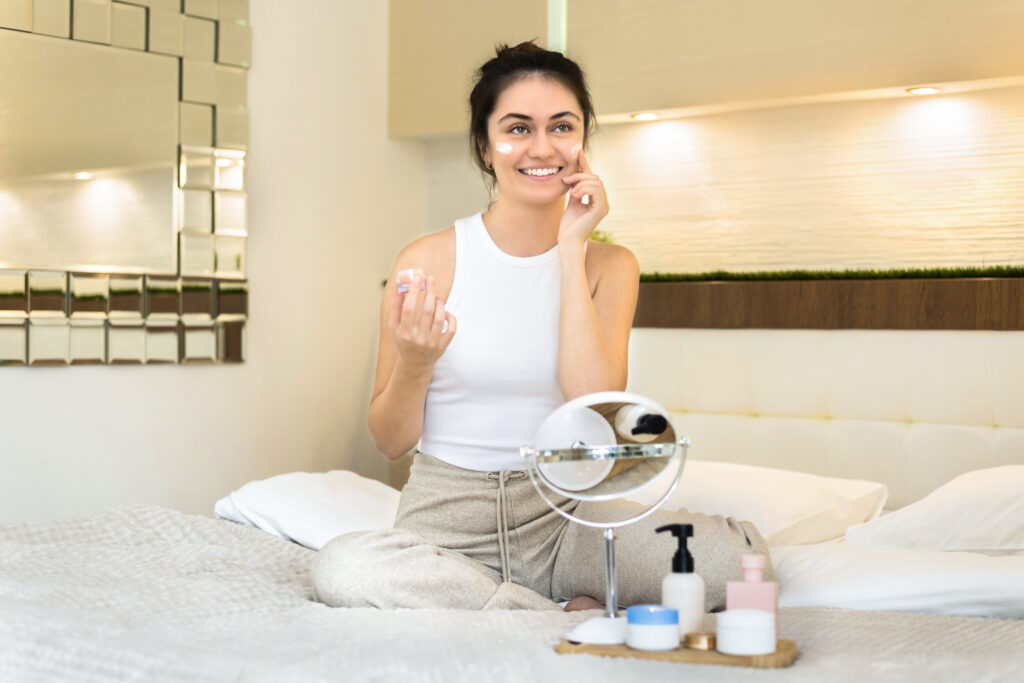
Table of Contents
When we look at celebrities walking the red carpet or posting makeup-free selfies, one thing is common—their skin looks flawless, radiant, and youthful. Many people wonder if it’s only genetics or expensive products that give them that glow. The truth? A celebrities skin care routine is usually a combination of dermatologist-approved habits, professional treatments, and consistency.
At Dr. Hanan Dermatology Speciality and Trichology Clinic, Chennai, we see many patients asking for “celebrity-like glowing skin.” The good news is that with the right skincare practices and medical treatments, you too can achieve healthy, radiant skin without following unrealistic fads.
What Makes Celebrities’ Skin Different?
Contrary to popular belief, most celebrities don’t rely solely on luxury creams. Instead, they:
- Follow strict daily skincare routines customized by dermatologists.
- Invest in professional treatments like Hydrafacial, chemical peels, or laser therapies.
- Focus on diet, hydration, and lifestyle changes to support skin health.
Celebrities’ skin looks perfect because they treat skin as an investment—not just an afterthought.
Step-by-Step Celebrities Skin Care Routine
Here’s what most dermatologist-approved celebrity routines look like:
Cleansing with Gentle Formulas
Cleansing is the foundation of every skincare routine. Celebrities use gentle, sulfate-free cleansers that remove dirt, oil, and makeup without stripping natural oils. For those in Chennai’s humid climate, gel-based cleansers are ideal.
Tip from dermatologists: Choose a cleanser based on your skin type—oily, dry, or sensitive. Read more about choosing products in our blog on How to Choose the Right Shampoo for Your Hair Type.
Hydration is Key
Glowing skin is well-hydrated skin. Most celebrity skincare routines include hyaluronic acid serums and lightweight moisturizers that lock in moisture without clogging pores.
At Dr. Hanan Clinic, we often recommend medical facials like Hydrafacial for patients seeking instant hydration and brightness.
Sunscreen – The Celebrity Secret Weapon
Ask any celebrity dermatologist, and they’ll confirm: sunscreen is non-negotiable. Whether it’s filming under bright lights or walking outdoors, celebrities always protect their skin from harmful UV rays.
For Chennai’s weather, we suggest gel-based or matte sunscreens with SPF 50+. Skipping sunscreen is a red flag habit we warn against in our blog on Dermatologist-Approved Haircare Habits.
Exfoliation and Brightening Treatments
To maintain smooth texture and even tone, celebrities opt for:
- Chemical peels for pigmentation and dullness.
- Laser treatments for scars and fine lines.
- Microneedling with PRP or exosomes for rejuvenation.
At Dr. Hanan Clinic, our Laser Skin Resurfacing and microneedling therapies are popular with patients who want “red carpet-ready skin
Night Care Routine
Celebrities swear by nighttime skincare. They use retinol, peptides, or nourishing creams to repair the skin barrier overnight. Retinol in particular is widely praised for its anti-aging benefits, but it should always be used under dermatologist guidance.
We offer customized anti-aging treatments in Chennai for patients who want to fight wrinkles and maintain youthful skin like celebrities.
Professional Treatments Celebrities Swear By
Beyond home care, celebrities invest in dermatology treatments to maintain skin health. Some of the most popular include:
- Hydrafacial in Chennai – Deep cleansing, exfoliation, and hydration.
- Glutathione Therapy – Brightens skin and reduces pigmentation.
- Chemical Peels – Treats tanning, dullness, and acne marks.
- Laser Resurfacing – Removes scars, pigmentation, and fine lines.
These treatments are safe, evidence-based, and dermatologist-supervised, unlike the DIY facials or viral skincare hacks you see online.
Why Choose Dr. Hanan Clinic for Celebrity-Like Skincare?
At Dr. Hanan Dermatology Speciality and Trichology Clinic, Chennai, we specialize in:
- Evidence-based skincare treatments designed for Indian skin.
- FDA-approved technologies for safe results.
- Customized celebrity-inspired regimens for each patient.
- Backed by 1000+ real Google reviews from satisfied clients.
Whether you want a glow-up before your wedding or a long-term anti-aging plan, we provide the same dermatologist-level care that celebrities rely on.
Final Thoughts
The truth is, celebrities skin care routine is not a mystery. With dermatologist guidance, consistency, and the right treatments, anyone can achieve radiant, healthy skin. At Dr. Hanan Clinic, we bring celebrity-level skin expertise to Chennai—making flawless skin more accessible than ever.
Book Your Consultation Today!
Does LED Light Therapy Really Work for Hair Growth?
Does LED Light Therapy Really Work for Hair Growth?
Understand how LED Light Therapy helps boost hair growth by energizing follicles and reducing scalp inflammation
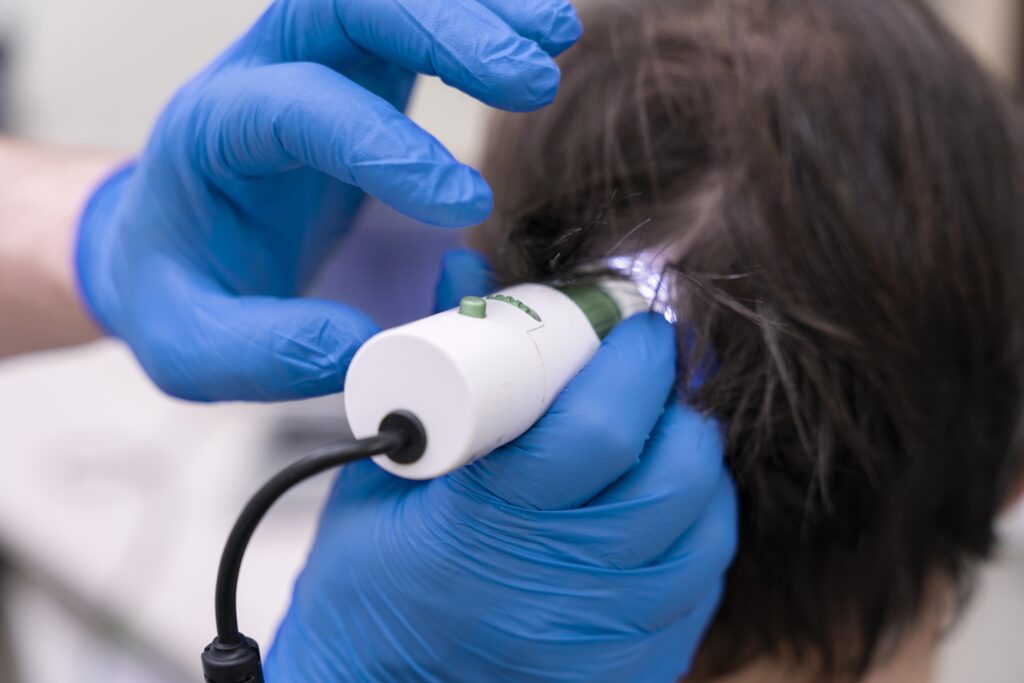
Table of Contents
Hair loss is one of the most common concerns for both men and women today. From stress and hormonal imbalances to genetics and poor scalp health, many factors can contribute to thinning hair. While treatments like PRP therapy and hair transplantation are well-known, there’s another innovative, non-invasive solution that’s gaining popularity — LED Light Therapy.
What Is LED Light Therapy?
LED Light Therapy (also called Low-Level Laser Therapy or LLLT) uses specific wavelengths of light — particularly red and near-infrared light — to stimulate hair follicles and promote hair growth.
Unlike surgical procedures, LED therapy is completely non-invasive, painless, and has no downtime. It works at a cellular level, improving blood circulation in the scalp and enhancing the activity of hair follicle cells.
The light energy penetrates the scalp tissue and stimulates mitochondria (the cell’s powerhouse), improving energy production and nutrient absorption. This helps weakened hair follicles become active again, resulting in stronger, thicker hair strands.
How Does LED Light Therapy Work for Hair Growth?
LED therapy works through a process called photobiomodulation — where light energy interacts with the scalp’s cells to trigger biological reactions. Here’s what happens:
- Increases Blood Flow: Red light boosts microcirculation in the scalp, delivering more oxygen and nutrients to hair follicles.
- Reduces Inflammation: It calms the scalp and prevents inflammation that can damage follicles.
- Activates Follicle Growth: The therapy extends the anagen (growth) phase of the hair cycle.
- Strengthens Hair Roots: Improved energy supply helps weak follicles grow thicker, stronger strands.
At Dr. Hanan Clinic, our dermatologists use FDA-approved LED devices that emit the right wavelength (usually between 630–670 nm) for optimal results.
Benefits of LED Light Therapy
LED Light Therapy offers numerous benefits for those dealing with early or moderate hair loss:
- ✅ Non-surgical & pain-free treatment
- ✅ Stimulates natural hair regrowth
- ✅ Improves scalp circulation
- ✅ Reduces hair thinning and breakage
- ✅ Enhances the results of PRP or hair transplant treatments
- ✅ Safe for both men and women
Many patients at our Chennai clinic combine LED Light Therapy with PRP (Platelet-Rich Plasma) or mesotherapy for faster, long-lasting results.
Who Is the Right Candidate for LED Light Therapy?
LED Light Therapy is ideal for:
- People experiencing early-stage hair loss or hair thinning
- Those with post-hair transplant recovery needs
- Patients who prefer non-surgical treatment options
- Individuals dealing with stress-related hair shedding
However, for patients with complete baldness, LED therapy may not be sufficient. In such cases, our dermatologists recommend Hair Transplant Treatment in Chennai for permanent results.
What to Expect During the Treatment
The procedure is simple, relaxing, and takes only 20–30 minutes per session:
- You’ll be seated comfortably under an LED light dome.
- The device emits red and infrared light that penetrates the scalp.
- You may feel mild warmth, but there’s no discomfort or pain.
- No downtime — you can resume your daily activities immediately.
A full treatment plan typically involves 8–12 sessions spaced over several weeks, with visible improvement in 3–4 months.
Is LED Light Therapy Clinically Proven?
Yes ✅
Multiple studies published in peer-reviewed dermatology journals have shown that Low-Level Laser Therapy (LLLT) effectively promotes hair growth by stimulating cellular energy and increasing blood flow.
Dermatologists worldwide recommend it as part of a comprehensive hair restoration plan, especially when combined with treatments like PRP, microneedling, or minoxidil therapy.
Why Choose Dr. Hanan Clinic for LED Light Therapy in Chennai?
At Dr. Hanan Dermatology Speciality and Trichology Clinic, we combine science, experience, and technology to deliver real results.
- Expert Dermatologists and Trichologists with years of clinical experience
- FDA-approved LED systems designed for safe and effective use
- Customized hair restoration plans based on individual scalp analysis
- 1000+ genuine Google reviews from happy patients across Chennai
We’re known as one of the best hair transplant clinics in Chennai, and our LED Light Therapy is a key part of our non-surgical treatment success.
Final Thoughts
So, does LED Light Therapy really work for hair growth?
Yes — when performed under dermatologist supervision using medical-grade devices, it’s a scientifically backed, effective, and safe treatment for stimulating natural hair regrowth.
At Dr. Hanan Clinic, we help you reclaim your confidence with advanced technologies like LED Light Therapy, PRP, and Hair Transplantation, all tailored to your needs.
Book Your Consultation Today!
Dermatologist Approved Haircare Habits
Dermatologist Approved Haircare Habits
Learn dermatologist approved haircare habits to boost scalp health. Spot green flags vs red flags and protect your hair with expert tips from Dr. Hanan Clinic, Chennai.
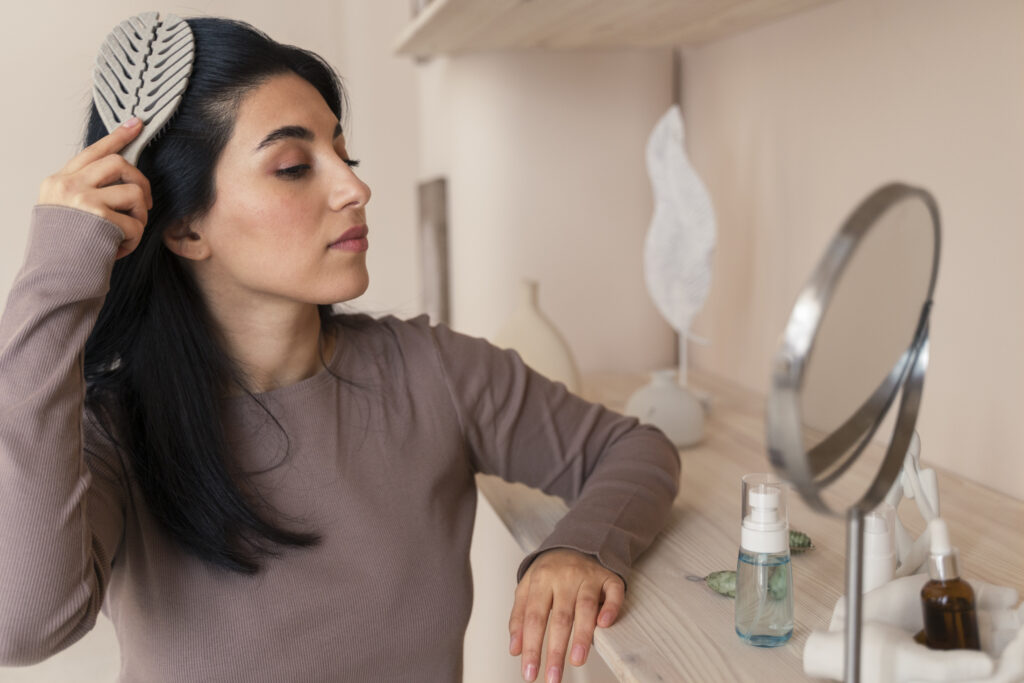
Table of Contents
Healthy, strong hair doesn’t just come from good genetics—it also comes from consistent, scientifically sound haircare habits. But many people follow advice from social media or hearsay, which sometimes includes harmful steps. In this blog, we’ll walk you through dermatologist-approved green flags (good habits you should follow) and red flags (practices to avoid). Use this as your reference to build a haircare routine that supports scalp health and hair growth.
Why Haircare Habits Matter
Your scalp is skin too, and hair follicles depend on a balanced environment—adequate hydration, minimal inflammation, good blood circulation, and proper nutrition. Poor habits (overwashing, harsh chemicals, tight hairstyles) can cause damage, breakage, hair fall, or scalp issues like irritation or dandruff.
As specialists in dermatology and trichology, at Dr. Hanan Dermatology Speciality and Trichology Clinic, we see many patients whose hair loss or scalp problems are worsened by bad habits. The good news: small changes—making more green flag habits—can make a big difference.
Green Flag Haircare Habits (What Dermatologists Approve)
These are safe, beneficial habits that support hair health for most people
Use a gentle, sulfate-free shampoo
Harsh sulfates strip natural oils, making the scalp dry and triggering overcompensation by sebaceous glands. Use mild cleansers or shampoos with gentle surfactants. For example, shampoos containing cocamidopropyl betaine or sodium lauryl sulfoacetate are milder.
Wash frequency suited to scalp type
Not everyone needs daily shampooing. For those with oily scalps, washing more often is okay; for dry or color-treated hair, washing 2–3 times per week may suffice. Let your scalp’s oil balance guide you.
Condition the mid-lengths to ends
Apply conditioner only from the mid-shaft downward—not on the scalp—so that the scalp isn’t weighed down or clogged. Use ingredients like panthenol, hydrolyzed keratin, and natural oils in conditioners.
Pat dry, don’t rub
Vigorous towel rubbing causes mechanical damage. Instead, gently pat or squeeze excess water, or use a microfiber towel or soft cotton T-shirt.
Use wide-tooth combs or detangling brushes
Especially when hair is wet, use a wide-tooth comb or specially designed detangler to minimize breakage.
Protect hair from heat & UV damage
- Use a heat protectant spray before blow-drying, straightening, or curling.
- Keep styling tools at moderate temperature (below ~180 °C).
- During sun exposure, protect hair with hats or use hair sunscreen or UV-protectant sprays.
Learn more about protection in our blog on Hair Fall While Combing: Best Ways to Minimize It
Scalp massage & circulation support
Gently massaging the scalp for a few minutes daily improves blood flow. Some dermatologists recommend low-level laser therapy (LLLT) or microneedling (under clinical supervision) to boost follicle health.
Scalp massages improve circulation. Some clinical solutions like PRP therapy also stimulate hair regrowth (read more about PRP Treatment for Hair Loss in Chennai
Balanced diet and hydration
Hair follicles need nutrients. Ensure adequate protein, iron, zinc, biotin, omega-3 fatty acids, vitamins A, C, D. Drink enough water. Poor nutrition often shows up as weak, dull hair.
Regular trimming
Trimming split ends every few months prevents further splitting that can travel up the hair shaft. This doesn’t grow hair faster, but helps hair look healthier.
Consistent scalp care routine
If you have dandruff, sensitivity, or scalp conditions, use medicated shampoos or treatments as prescribed. Follow dermatologist advice rather than random over-the-counter aggressive treatments.
Red Flag Haircare Habits (What Dermatologists Warn Against)
These are common but harmful practices that many people do—often without realizing the damage they cause.
Daily use of harsh chemical treatments
Bleaches, strong perms, repeated coloring can damage hair structure and scalp barrier. Doing these frequently weakens hair and increases breakage or permanent hair loss.
Over-washing or frequent shampooing with harsh surfactants
This strips natural oils and damages the scalp barrier, causing compensatory oiliness, dryness, or irritation.
Applying conditioner or heavy product directly to the scalp
This can block follicle openings, trap debris, and lead to clogged pores or milia, especially in sensitive scalps.
Tight hairstyles & constant traction
Styles like braids, tight ponytails or buns, weaves, or extensions create strain on hair follicles, causing traction alopecia over time.
Sleeping without hair protection
Sleeping on rough cotton pillowcases or without wrapping/covering your hair can cause friction, leading to breakage.
Heat styling at very high temperatures
Using flat irons or curling wands at extreme heat repeatedly damages keratin bonds and leads to brittle, broken hair.
Ignoring scalp symptoms
Itchiness, flaking, pain, or tender spots might indicate scalp disease—ignoring them or self-medicating can worsen the condition.
Use of generic or aggressive products without guidance
Random use of strong acids, bleaching agents, or unknown serums can lead to chemical burns, pigmentation, or hair loss.
Skipping sun protection for hair
UV radiation damages hair protein, fades color, and weakens structure. Scalp and hair UV protection is needed.
Poor diet, dehydration, over-stress
Chronic stress, nutrient deficiency, dehydration, smoking all negatively influence hair health.
Tips for Building a Dermatologist-Approved Haircare Routine
- Identify your scalp type (oily, dry, normal, combination)
- Choose gentle products with fewer irritants
- Start with the green flag habits above and gradually eliminate red flag ones
- Monitor your hair over 2–3 months and adjust
- If persistent hair fall, thinning or scalp changes occur, consult a dermatologist or trichologist
At Dr. Hanan Dermatology Speciality and Trichology Clinic, we evaluate scalp condition, hair density, and history before recommending a personalized regime.
Why Dr. Hanan Clinic Is Trusted for Haircare
When patients look for the best dermatologist in Chennai or the top hair transplant clinic in Chennai, they often find us. Our reputation comes from:
- Expert dermatologists and trichologists who diagnose and treat scalp/hair issues scientifically
- Ethical, evidence-based treatments that protect scalp health
- Genuine patient reviews (our clients often share how adopting green flag habits after their treatments improved results)
- Seamless integration between dermatology (skin) and trichology (hair) care
Final Thoughts
Building a haircare routine based on dermatologist-approved habits strengthens your hair, protects your scalp, and enhances the results of any medical treatment you may undergo. Always look for green flag habits and be aware of the red flags.
If you’re noticing persistent hair fall, thinning, or scalp issues, your best step is to consult a specialist. At Dr. Hanan Dermatology Speciality and Trichology Clinic, we combine medical expertise with patient education – helping you care for your hair every day.
Book Your Consultation Today!
Antimelan Therapy in Chennai – Clear Pigmentation with Dr. Hanan Clinic
Antimelan Therapy in Chennai – Clear Pigmentation with Dr. Hanan Clinic
Struggling with melasma or pigmentation? Try Ultimate Antimelan Therapy at Dr. Hanan Clinic, Chennai. Limited-time offer ₹7,000

Skin pigmentation, dark patches, and melasma are among the most frustrating skin conditions people face—especially in a city like Chennai, where the sun is intense, humidity is high, and pollution is unavoidable. While many creams and home remedies claim to work, they rarely deliver long-lasting results.
At Dr. Hanan Dermatology Speciality and Trichology Clinic, we are proud to offer the Ultimate Antimelan Therapy, a dermatologist-supervised, advanced skin treatment that effectively reduces pigmentation, fades dark spots, and restores natural radiance.
And here’s the exciting part—this premium treatment, originally priced at ₹12,000, is now available for just ₹7,000 (Terms & Conditions Apply).
Book your consultation today at 6381048403 / 9025617297 and take advantage of this limited-time offer.
Understanding Pigmentation and Melasma
Before we dive into how Antimelan Therapy works, it’s important to understand what pigmentation is and why it happens.
- Pigmentation occurs when there is an overproduction of melanin (the pigment that gives our skin its color).
- Melasma, a specific type of pigmentation, appears as brown or grayish patches, usually on the cheeks, forehead, and jawline.
Common Triggers for Pigmentation:
- Excess Sun Exposure – UV rays stimulate melanin production.
- Hormonal Changes – Pregnancy, thyroid issues, or birth control can trigger melasma.
- Pollution & Lifestyle – Dirt, toxins, and unhealthy habits worsen uneven skin tone.
- Genetics – Some people are simply more prone to pigmentation.
At Dr. Hanan Clinic, we see dozens of patients every month struggling with these concerns, often after trying every cream and facial available. That’s why we introduced Antimelan Therapy, a scientifically proven, clinic-grade solution.
What is Ultimate Antimelan Therapy?
Antimelan Therapy is a specialized medical protocol designed to target stubborn pigmentation at multiple skin layers. Unlike basic facials or over-the-counter products, it uses medical-grade peels, brightening agents, and dermatologist expertise to deliver safe and visible results.
This therapy is not just about making skin look brighter—it’s about treating the root causes of pigmentation so that results last longer.
How it Works:
- Cleansing & Prepping – The skin is gently cleansed and analyzed.
- Application of Antimelan Solution – A customized blend of brightening agents targets excess melanin.
- Controlled Exfoliation – Removes damaged skin layers and stimulates fresh cell turnover.
- Deep Penetration – Ingredients reach deeper layers to reduce melasma at its source.
- Post-Therapy Care – Hydrating serums and sun protection are applied.
Most patients start noticing visible improvements in 2–3 weeks, with full results showing after a few sessions.
Benefits of Antimelan Therapy
At Dr. Hanan Dermatology Speciality Clinic, patients choose Ultimate Antimelan Therapy because it offers multiple skin benefits:
- Reduces Stubborn Melasma – Works effectively where creams fail.
- Evens Out Skin Tone – Removes patchiness and restores clarity.
- Brightens Dull Complexion – Boosts radiance for a healthy glow.
- Safe for Indian Skin – Designed to avoid side effects like redness or over-lightening.
- Long-Term Results – Controlled by dermatologist guidance and follow-ups.
This makes it one of the best pigmentation treatments in Chennai.
Who Can Benefit from Antimelan Therapy?
This therapy is recommended for anyone struggling with:
- Melasma (hormonal pigmentation)
- Post-acne scars or marks
- Sun spots and tanning
- Uneven, patchy skin tone
- Dull or tired-looking skin
If you have already tried over-the-counter creams, home remedies, or salon facials without results, Antimelan Therapy is your next step.
Why Choose Dr. Hanan Clinic for Antimelan Therapy?
Choosing the right clinic matters just as much as choosing the right treatment. Here’s why patients across Chennai trust Dr. Hanan Dermatology Speciality and Trichology Clinic:
- Expert Dermatologists – Every procedure is performed by qualified specialists.
- Personalized Treatment Plans – No one-size-fits-all approach—each therapy is customized.
- Advanced Technology – We use FDA-approved tools and solutions.
- Proven Track Record – With 1000+ genuine Google reviews, our clinic is one of the most trusted in Chennai.
- Affordable Pricing – Our current special offer: ₹7,000 (from ₹12,000) makes advanced care more accessible.
Located at Padur, OMR, Chennai, we are easy to reach for patients across the city.
Special Offer – Limited Period Only
Ultimate Antimelan Therapy now at ₹7,000 (Original Price: ₹12,000)
Terms & Conditions Apply
Call or WhatsApp: 6381048403 / 9025617297
Don’t miss the chance
Final Thoughts
Pigmentation can be tough to live with, but with the right expert-led treatment, clear and radiant skin is possible. The Ultimate Antimelan Therapy at Dr. Hanan Clinic combines dermatologist expertise, advanced protocols, and proven results—all at an affordable offer price of ₹7,000.
Book Your Consultation Today!
Table of Contents
Affordable Hair Transplant Options: How to Choose a Best Clinic in Chennai
Affordable Hair Transplant Options: How to Choose a Best Clinic in Chennai
Get affordable hair transplant in Chennai without compromising quality from the best hair transplant clinic in chennai

Hair loss is a growing concern for both men and women in India, and Chennai is no exception. Whether it’s due to genetics, stress, hormonal changes, or lifestyle, the demand for affordable hair transplant solutions has been steadily increasing. But the biggest question people ask is: Can I really get a budget-friendly hair transplant without compromising on quality or safety?
The answer is yes—if you choose the right clinic and dermatologist. In this guide, we’ll explain what to look for in an affordable hair transplant, why cost should not be the only deciding factor, and why Dr. Hanan Dermatology Speciality and Trichology Clinic is trusted as one of the best hair transplant clinics in Chennai for long-lasting, natural results.
Why “Affordable Hair Transplant” Doesn’t Mean Cheap Quality
Many people assume that affordable treatments equal low standards. But in reality, affordability simply means:
- Transparent and ethical pricing.
- Customized treatment plans based on your hair loss stage.
- Clinics that avoid unnecessary add-ons or hidden costs.
At Dr. Hanan Dermatology Speciality Clinic, affordability means world-class treatment with fair pricing, ensuring that every patient can access advanced hair restoration without financial stress.
Factors That Decide the Cost of a Hair Transplant in Chennai
When searching for the best affordable hair transplant clinic, keep in mind these factors that influence cost:
Number of Grafts Required
The more advanced your baldness, the more grafts you need. For example:
- 1000–1500 grafts → Early thinning.
- 2000–3000 grafts → Moderate baldness.
- 4000+ grafts → Advanced baldness.
If you’re unsure about your graft requirement, check our detailed guide: How Many Grafts Do You Need for a Successful Hair Transplant?
Type of Technique Used
FUE (Follicular Unit Extraction): Minimally invasive, faster healing, and natural results.
FUT (Follicular Unit Transplantation): Suitable for larger graft counts but involves a linear scar.
Advanced methods (DHI, Sapphire FUE, Robotic): May cost more but provide precision and density.
Experience of the Dermatologist
Choosing an experienced hair transplant surgeon is non-negotiable. At Dr. Hanan Clinic, procedures are performed by dermatologists trained in both dermatology and trichology, ensuring medical accuracy and cosmetic precision.
Clinic Facilities & Safety Standards
Clinics with FDA-approved tools, sterilization protocols, and advanced technologies may cost slightly more, but they guarantee patient safety and better results.
How to Choose the Right Clinic for an Affordable Hair Transplant
When searching for “affordable hair transplant in Chennai,” don’t fall for flashy advertisements or only compare costs. Instead, look for these signs of trust:
- Transparent Pricing Models – A good clinic shares exact costs before the procedure.
- Qualified Dermatologists – Always check if the surgeon is an MD dermatologist or trichologist.
- Before & After Results – Genuine patient photos and success stories build trust.
- Technology Used – Clinics with advanced tools ensure natural results and faster recovery.
- Patient Reviews – At Dr. Hanan Clinic, over 1000 genuine Google reviews prove why patients trust us.
Remember: A poorly done transplant may require corrective surgery—doubling your costs later.
For details on preparing before a procedure, read: Scalp Health Before Hair Transplant: Why Preparation Matters.
How to Choose the Right Clinic for an Affordable Hair Transplant
At Dr. Hanan Dermatology Speciality and Trichology Clinic in Chennai, we specialize in delivering affordable yet high-quality hair transplant solutions tailored to each patient.
Here’s why patients choose us:
- Expert Dermatologists: Every procedure is performed by trained dermatologists specializing in hair restoration.
- Customized Treatment Plans: We analyze scalp health before deciding on graft count or method.
- Advanced Techniques: We use FUE, DHI, and PRP-assisted transplants for maximum graft survival.
- Proven Success: Hundreds of patients have restored their confidence through our treatments.
- Affordability Without Compromise: Transparent pricing with flexible EMI options.
Learn more about our advanced solutions: PRP Treatment for Hair Loss in Chennai.
Final Thoughts
Getting an affordable hair transplant in Chennai does not mean compromising on safety or results. The key lies in choosing a trusted clinic with expert dermatologists, transparent pricing, and advanced techniques.
At Dr. Hanan Dermatology Speciality and Trichology Clinic, we combine affordability
Book Your Consultation Today!
Table of Contents
Why 1,000 Patients Trust Us as the Best Dermatology Clinic in Chennai
Why 1,000 Patients Trust Us as the Best Dermatology Clinic in Chennai
With 1,000 genuine reviews, Dr. Hanan Clinic is Chennai’s best dermatology clinic in chennai & hair transplant center.

Choosing the best dermatologist in Chennai is a crucial step in achieving healthy, glowing skin and strong, natural-looking hair. In today’s digital age, patients rely on Google reviews and real experiences to guide them—and at Dr. Hanan Dermatology Speciality and Trichology Clinic, we’re proud to have earned the trust of over 1,000 genuine patients.
With a 4.9-star rating and 1,000+ reviews, our clinic stands as one of the most trusted dermatology and hair transplant clinics in Chennai. But reviews alone don’t tell the full story—our success comes from a combination of expertise, advanced technology, personalized care, and real results.
Why Patients Trust Dr. Hanan Dermatology Speciality and Trichology Clinic
Expert Dermatologists and Trichologists
Our dermatologists treat a wide range of conditions from acne and pigmentation to advanced hair loss. Patients seeking acne scar solutions can explore our detailed blog on Best Acne Scar Treatments in Chennai, where we break down treatment options like chemical peels and lasers.
Comprehensive Range of Services
We provide a complete suite of skin and hair services. For instance:
- Acne and pigmentation concerns are covered in our blog on Hair Fall While Combing: Best Ways to Minimize It.
- Patients exploring skin brightening can read our blog on Top Skin Brightening Treatments in Chennai.
- For those considering advanced technology, our article on Laser Treatment for Scars highlights how laser solutions transform skin texture.
1,000 Genuine Reviews: A Trust Milestone
Patients with hair loss often come to us after reading our detailed posts like Hair Transplant Pain: What Should You Expect?, which debunks myths about discomfort during and after procedures.
Advanced Technology & Global Standards
Our clinic uses FDA-approved treatments like Q-Switched and Fractional CO2 Lasers. You can learn more in our blog on Laser Skin Resurfacing vs Chemical Peels – Which Is Right for You?, which compares two of our most popular treatments for skin rejuvenation.
Personalized and Transparent Care
When treating hair loss, our specialists often recommend PRP or a hair transplant depending on the severity. If you’re confused about treatment options, our guide on Hair Transplant Myths and Facts explains what’s real and what’s not in hair restoration.
Our Specialities in Dermatology and Trichology
- Acne and Acne Scar Treatments – Read our in-depth blog: 10 Skincare Mistakes You Don’t Know You’re Making, where dermatologists highlight habits that worsen acne.
- Pigmentation & Melasma Treatment – We’ve covered this extensively in Melasma Treatment: Expert Solutions for Clear, Even-Toned Skin.
- Hair Loss and Hair Transplant – For those preparing for a procedure, our blog Hair Transplant Aftercare Tips: Ensuring Long-Term Results outlines steps to protect grafts and encourage growth.
Final Thoughts
At Dr. Hanan Dermatology Speciality and Trichology Clinic, crossing the milestone of 1,000 genuine reviews proves why patients call us the best dermatology clinic in Chennai.
If you are searching for the best dermatologist in Chennai for acne, pigmentation, or anti-aging—or the best hair transplant clinic in Chennai for baldness and hair restoration—you can trust our clinic to deliver excellence.
Book Your Consultation Today!
Table of Contents
Melasma Treatment in Chennai: Expert Solutions for Pigmentation
Melasma Treatment in Chennai: Expert Solutions for Pigmentation
Looking for melasma treatment in Chennai? Dr. Hanan Clinic offers chemical peels, lasers & dermatologist-led solutions for clear, even-toned skin.

Melasma is one of the most common skin pigmentation concerns among Indians, especially in cities like Chennai, where high UV exposure, humidity, and lifestyle stressors contribute to worsening pigmentation. Characterized by dark brown or grayish patches, usually on the face, melasma is more than just a cosmetic concern—it can affect confidence, self-esteem, and quality of life.
At Dr. Hanan Dermatology Speciality and Trichology Clinic, we treat melasma with a scientific, evidence-based approach, combining modern dermatological treatments with preventive care.
This guide will help you understand what melasma is, its causes, treatment options, lifestyle changes, and answers to the most common questions patients ask us at our clinic in Chennai.
What Is Melasma?
Melasma is a chronic skin pigmentation disorder caused by overproduction of melanin (the pigment responsible for skin color). It appears as irregular, brown or gray patches on the face—commonly on:
- Cheeks
- Nose bridge
- Forehead
- Upper lip
- Chin
Although melasma is not dangerous, it is stubborn and recurrent, requiring consistent care.
Causes of Melasma
Melasma is multifactorial—meaning more than one cause contributes to it. The most common triggers are:
- Excessive Sun Exposure: Chennai’s tropical climate exposes skin to strong UVA/UVB rays, stimulating excess melanin.
- Hormonal Changes: Pregnancy, oral contraceptives, or thyroid imbalances.
- Genetics: A family history of melasma increases the risk.
- Skin Type: More common in people with medium-to-dark skin tones (Fitzpatrick types III–V).
- Cosmetic Use: Harsh creams or self-medication with bleaching products.
- Stress & Heat: Increase cortisol levels and inflammation, worsening pigmentation.
Types of Melasma
Dermatologists identify melasma based on the depth of pigmentation:
- Epidermal Melasma – affects the upper skin layer; lighter brown, well-defined; responds well to creams and peels.
- Dermal Melasma – affects deeper skin layers; appears bluish-gray; harder to treat.
- Mixed Melasma – combination of both; most common in Indian patients.
Why Is Melasma So Common in Chennai?
Chennai’s climate and lifestyle make melasma particularly challenging:
- Intense sunlight throughout the year
- High humidity, leading to sweat + skin irritation
- Outdoor lifestyle and pollution
- Darker Indian skin tones, which are more prone to pigmentation
This is why dermatologist-guided melasma treatment is essential in Chennai for long-term results.
Does More Grafts Always Mean Better Results?
Not necessarily. While more grafts may give higher density, quality and placement matter more than quantity. Poorly placed or low-survival grafts won’t give natural results, no matter how many are implanted.
That’s why it’s essential to choose an experienced clinic with advanced technology. At Dr. Hanan Dermatology Speciality and Trichology Clinic, we use FDA-approved tools and follow strict protocols to ensure graft survival and natural outcomes.
Melasma Treatment Options at Dr. Hanan Clinic
Topical Creams & Serums
Dermatologists prescribe creams containing:
- Hydroquinone (gold standard lightening agent)
- Kojic Acid, Azelaic Acid, Arbutin, Niacinamide
- Retinoids (Tretinoin) to boost cell turnover
- Tranexamic Acid (cream/serum) to block pigmentation pathways
These are usually first-line treatments and require medical supervision.
Chemical Peels
Medical-grade peels accelerate skin renewal, reduce pigmentation, and brighten skin.
Common peels include:
- Glycolic Acid Peels – gentle, suitable for beginners
- Mandelic Acid Peels – good for sensitive skin
- TCA (Trichloroacetic Acid) – deeper peel for stubborn pigmentation
Sessions are spaced 2–4 weeks apart for safe results.
Laser Treatment for Melasma
For resistant melasma, we use advanced laser therapy:
- Q-Switched Nd:YAG Laser – targets melanin safely
- Fractional CO2 Laser – improves texture and pigmentation
- Low-Fluence Laser Toning – reduces melasma without damaging surrounding skin
Laser treatment is safe when done by dermatologists and can deliver dramatic improvements.
Microneedling with Serums or Exosomes
- Creates micro-channels in skin → improves penetration of brightening serums.
- Can be combined with PRP (Platelet-Rich Plasma) or Exosome therapy for better results.
- Helps with pigmentation, texture, and overall glow.
Oral Medications & Supplements
- Tranexamic Acid Tablets – prescribed in resistant melasma cases.
- Antioxidants – Vitamin C, Glutathione, Polypodium Leucotomos extract.
- Improve skin healing and reduce oxidative stress.
Home Care & Lifestyle for Melasma Patients
Professional treatment is only 50% of the journey. Daily skincare habits determine long-term results.
- Use broad-spectrum sunscreen SPF 50+ daily, even indoors.
- Wear protective clothing, hats, and sunglasses outdoors.
- Avoid overusing harsh scrubs or bleaching creams.
- Maintain a balanced diet rich in antioxidants (berries, spinach, nuts).
- Stay hydrated and manage stress through yoga or meditation.
Internal Linking Suggestions
Professional treatment is only 50% of the journey. Daily skincare habits determine long-term results.
- Use broad-spectrum sunscreen SPF 50+ daily, even indoors.
- Wear protective clothing, hats, and sunglasses outdoors.
- Avoid overusing harsh scrubs or bleaching creams.
- Maintain a balanced diet rich in antioxidants (berries, spinach, nuts).
- Stay hydrated and manage stress through yoga or meditation.
Final Thoughts
Melasma may feel like a never-ending battle, but the truth is—it can be effectively managed with the right approach. At Dr. Hanan Dermatology Speciality and Trichology Clinic in Chennai, we specialize in customized melasma treatments backed by dermatology expertise and advanced technology.
With the right mix of medical treatments, lifestyle changes, and consistent aftercare, clear, glowing, and even-toned skin is possible.

